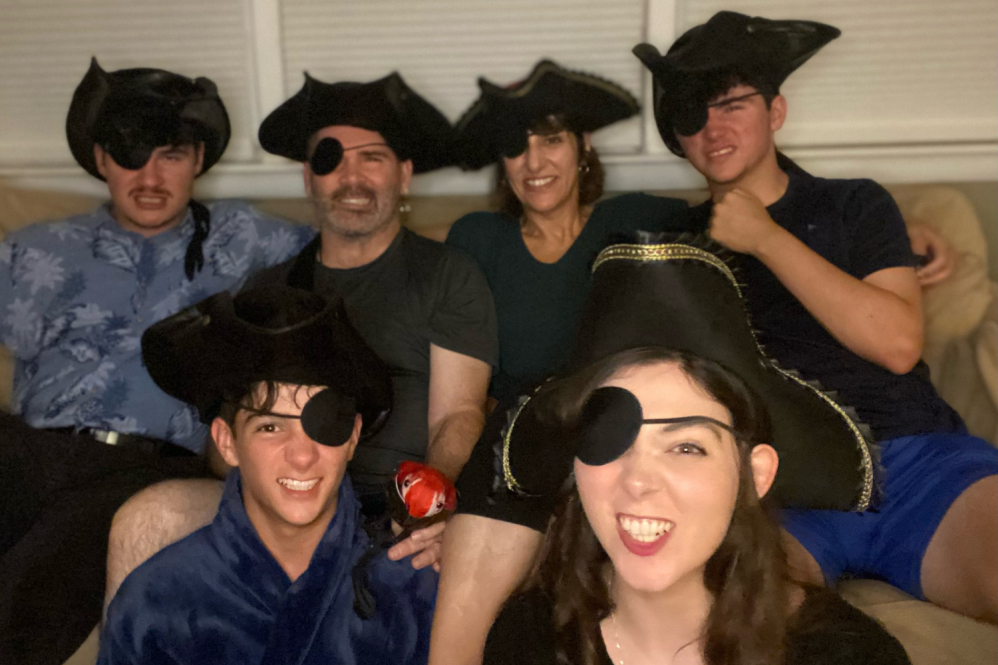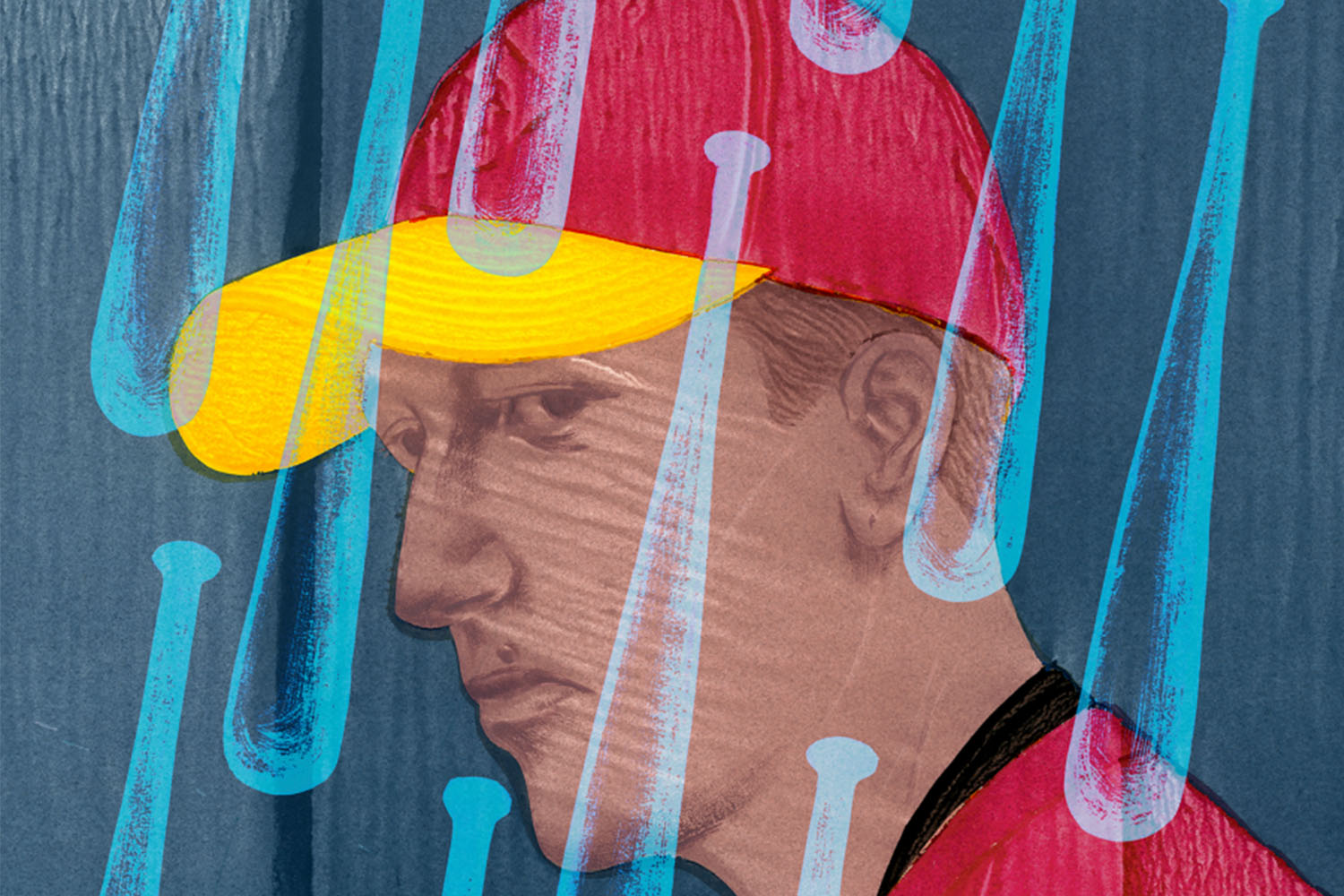For years, Scott Flanagan has cared for patients recovering from stroke helping them regain movement, confidence, and independence as a dedicated physical therapist at UConn John Dempsey Hospital. In 2023, he took his passion for stroke recovery a step further and joined UConn Health’s multidisciplinary Stroke Committee, working to enhance education and care for patients facing the life-altering effects of stroke.
He never imagined he would become one of them.
“I’ve worked with stroke patients for a long time, so I thought I had a good understanding,” Flanagan said. “But nothing prepares you for waking up one morning and suddenly not being able to see straight.”
It was a morning in August when Scott, who lives in Springfield, Massachusetts, bent over to pick up his phone and noticed something was wrong.
“I was seeing double. My right eye couldn’t move. I just knew something wasn’t right,” he recalled.
His symptoms were unusual but serious: his right eye was paralyzed, and he experienced persistent double vision.
Despite being in good health, having recently come off blood pressure and diabetes medications after improving his numbers through diet and exercise, Flanagan trusted his instincts.
Flanagan asked his son to drive him directly to UConn John Dempsey Hospital bypassing closer hospitals because he knew where he’d get the best care.
“I trusted the team here,” he said. “I’ve seen what they do, and I knew I’d be in good hands.”
In the Emergency Department (ED), a stroke alert was immediately activated. Neurologist, Dr. Gracia Mui and the ED team quickly assessed his symptoms, and imaging confirmed a small ischemic stroke caused by a blocked artery reducing blood flow to part of the brain.
Flanagan received TPA (tissue plasminogen activator), a medication used to dissolve clots and restore blood flow. Over the next few weeks, the treatment gradually began to reverse his symptoms.
He was referred to UConn Health’s neuro-ophthalmologist, Dr. Carolyne A. Riehle, who played a key role in his rehabilitation and adaptation by guiding him through therapy and the use of visual aids. Since more than 66% of all strokes result in vision loss, neuro-optometric rehabilitation therapy—also known as vision therapy—helps retrain the brain and eyes to work together through targeted visual exercises.
Flanagan also followed up with Dr. Priya Narwal, a board-certified vascular neurologist who leads UConn health’s stroke program. ” While acute stroke management in the hospital focuses on emergent treatment using medication and/or invasive procedures to optimize functional outcome, outpatient stroke care focuses on identifying and managing stroke risk factors which includes both medical conditions and lifestyle habits, ensuring that patients are on the right medications for stroke prevention and if any barriers exist to access appropriate medical resources ,or social / emotional support, those can be swiftly identified and addressed,” explained Narwal.
Today, Scott is fully recovered—with no lasting deficits.
“I had a really good outcome,” he said. “But I know that’s because I got to the right place, fast.”
UConn Health’s stroke care team is nationally recognized, earning the American Heart Association’s “Get With The Guidelines® – Stroke” Gold Award for seven consecutive years. The hospital’s Joint Commission certification ensures the highest standards for stroke treatment, rehabilitation, and education.
A stroke occurs when blood flow to a part of the brain is interrupted—either by a clot (ischemic stroke) or by bleeding in the brain (hemorrhagic stroke). Without oxygen-rich blood, brain cells begin to die within minutes.
Strokes are one of the leading causes of disability and the fifth leading cause of death in the U.S., according to the American Stroke Association.
Know the Signs: BE FAST
Time is critical when someone is having a stroke. The acronym BE FAST is a simple way to remember the warning signs:
- Balance – Sudden loss of balance or coordination
- Eyes – Sudden trouble seeing in one or both eyes
- Face – Facial drooping on one side
- Arms – Arm weakness or numbness, especially on one side
- Speech – Slurred speech or difficulty speaking
- Time – Time to call 9-1-1 immediately
Other symptoms to watch for include:
- Sudden numbness or weakness in the face, arm, or leg—especially on one side
- Confusion, trouble speaking, or understanding speech
- Trouble walking, dizziness, or loss of balance
- Severe headache with no known cause
If you or someone you know experiences any of these symptoms—call 911 immediately.
While some risk factors are out of your control—like age, family history, or previous stroke—many can be managed through lifestyle changes and medication:
- Control high blood pressure and cholesterol
- Manage diabetes
- Avoid smoking
- Exercise regularly
- Eat a healthy diet
- Limit alcohol use
Even healthy people like Scott, who had been eating well, exercising, and reducing his medications, can be affected. That’s why awareness and quick action are so critical.
Now back at work and feeling well, Scott remains on the stroke committee, more motivated than ever.
“I joined the stroke committee because I wanted to help educated stroke patients,” he said. “But now I am even more passionate because I can speak not just as a clinician, but as someone who’s lived it.”
His message this Stroke Awareness Month is simple but urgent: Know the signs. Trust your gut. Act fast. And get to the right place for care.



